- Author Matthew Elmers [email protected].
- Public 2023-12-16 21:49.
- Last modified 2025-01-24 09:17.
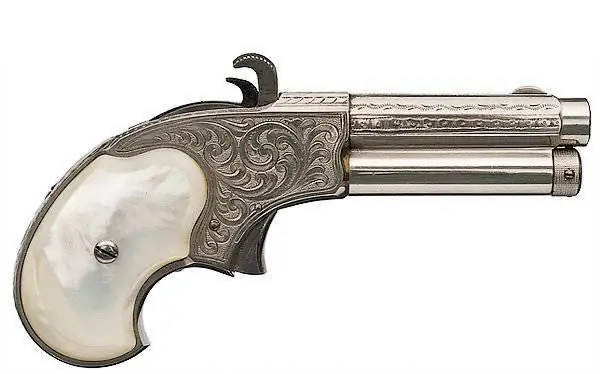
The Remington Company is famous for its revolvers and pistols. We have already written about such pistols as Remington-Elliot Derringer, Remington Zig-Zag Derringer, Remington Double Derringer. The company also produced revolvers and rifles. At the end of the 19th century, she occupied one of the leading positions in the arms market.
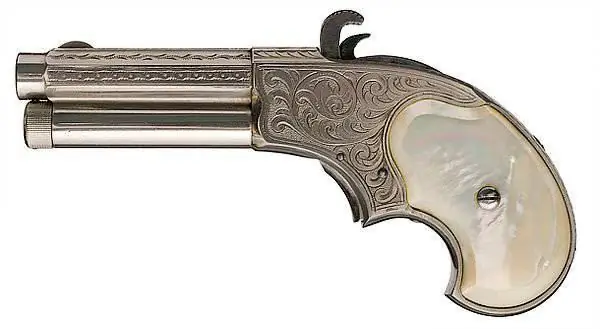
The Remington Rider magazine pistol has very recognizable features. The pistol consists of a frame with a handle, a barrel, an under-barrel magazine, parts of the firing mechanism and a reloading mechanism.
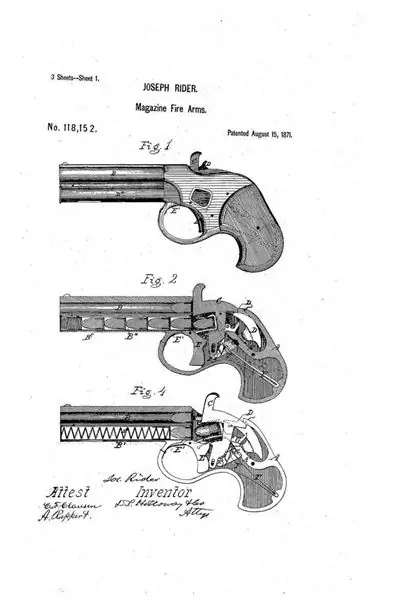
The pistol was designed by Joseph Rider, who registered a patent for his brainchild on August 15, 1871 under number 118152. The design of the under-barrel magazine is very similar to the device of the Volcanic pistol magazine and was probably borrowed from him.
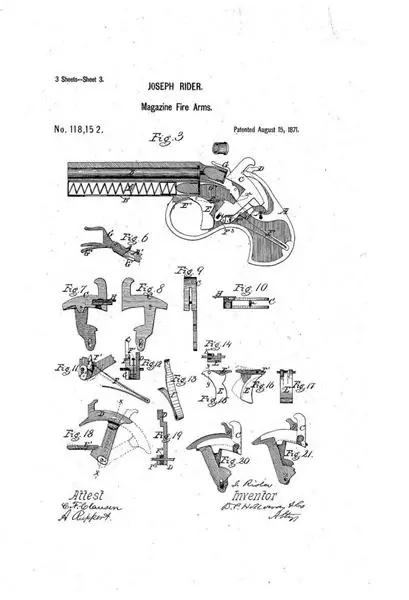
The pistol reloading mechanism was very unusual and original. The breech of the barrel locks the cocking (reloading) lever, inside which the trigger is installed. When the spokes of the cocking lever (reloading lever) are pulled back, the sleeve is removed from the chamber, the hammer is cocked and the cartridge from the store is fed to the line of the barrel bore. When the cocking lever moves forward, the cartridge is sent to the chamber and the barrel bore is locked - the pistol is ready to fire. When the trigger is pulled, a shot is fired.
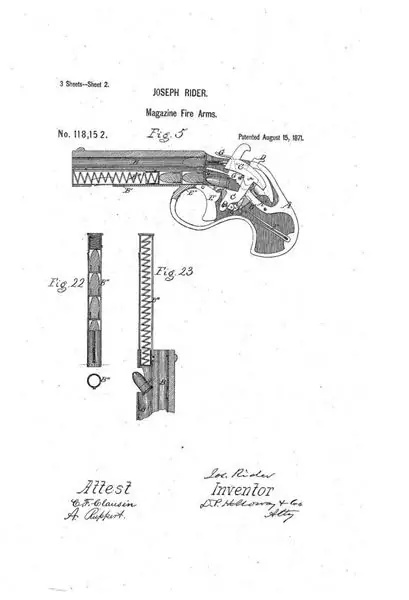
In the illustrations for the patent, Joseph Ryder's pistol has a trigger guard. In addition, loading the magazine with cartridges, according to one of the drawings, had to be done through a special window in the lower part of the magazine in front.
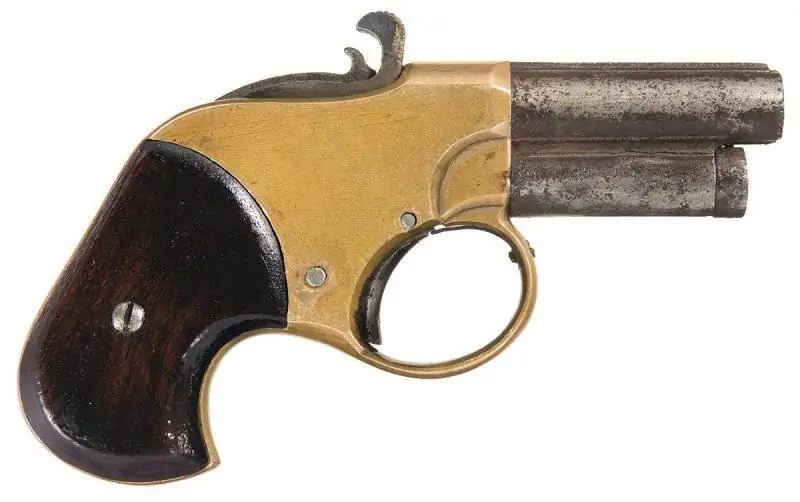
In fact, the patent describes the prototype of the Remington Rider pistol, which was produced only in the early 70s of the 19th century.
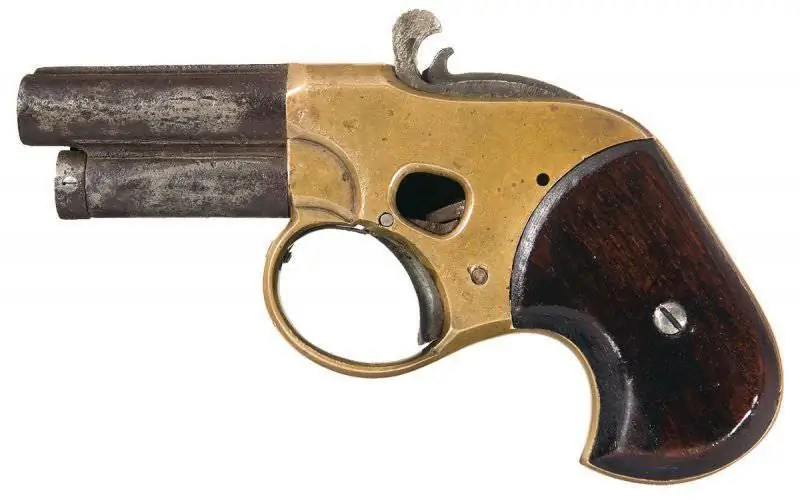
The barrel of the prototype was circular, 66 mm long. The frame is made of brass and equipped with a trigger guard. On the left side of the frame, a window is made, probably intended for equipping the store.
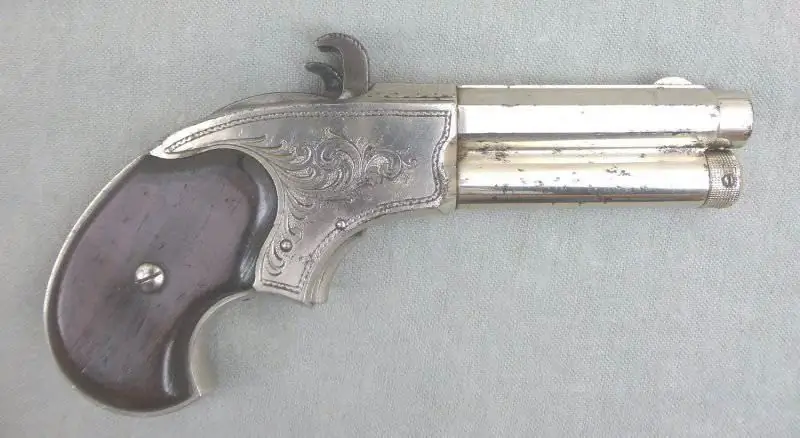
Later, the Remington Ryder pistol was modernized and became more compact and ergonomic, which should be a pocket weapon. The frame has become less massive, the trigger guard has disappeared, the shape of the grip cheeks has changed.
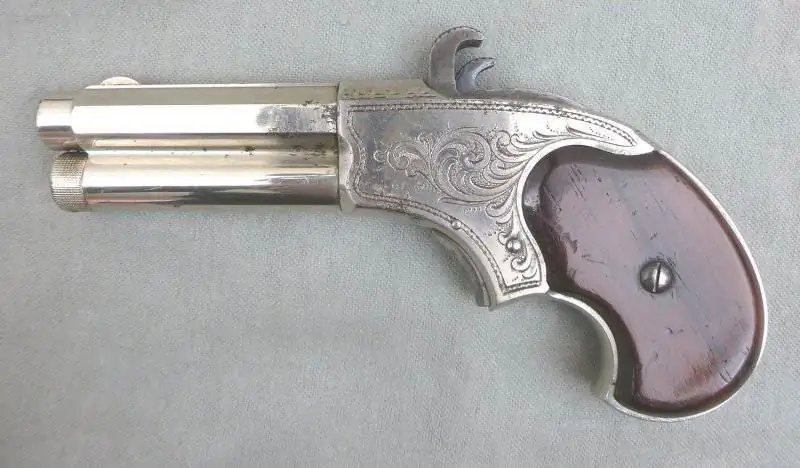
The pistol's barrel length increased to 76 mm, with a total weapon length of 145 mm, but otherwise the fundamental design of the Remington Rider magazine pistol did not change, but remained the same as that of the prototype.
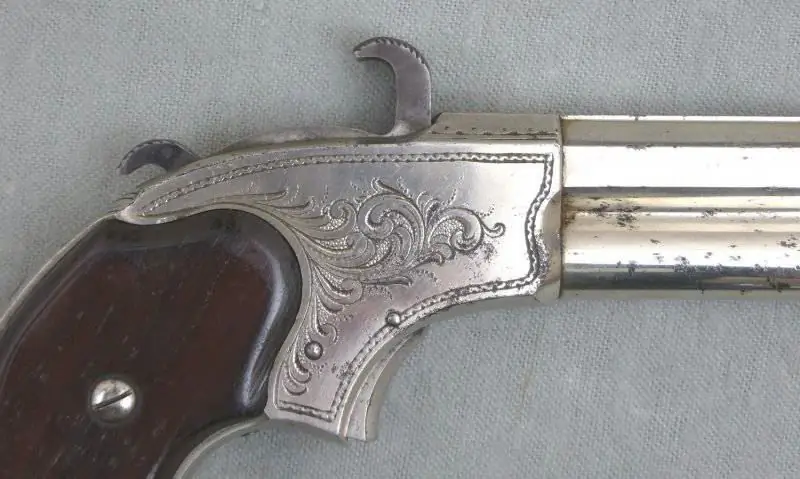
The trigger of the pistol is practically hidden in the frame and only when the hammer is cocked does it slightly protrude from the frame of the weapon.
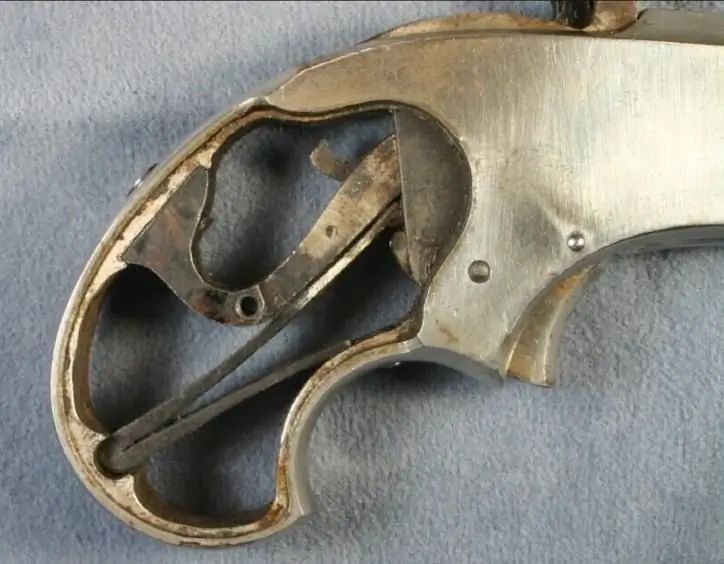
r
The mainspring of the pistol is a two-blade plate located in the cavity of the handle.

The trigger spoke and the cocking lever have a raised notch. The striking part of the trigger is flat, like other weapons fired at the end of the 19th century, loaded with rimfire cartridges.
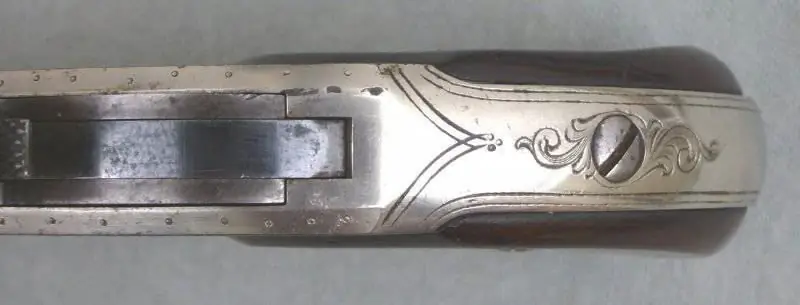
On the back of the pistol grip there is a screw for fastening the base of the cartridge feed mechanism.
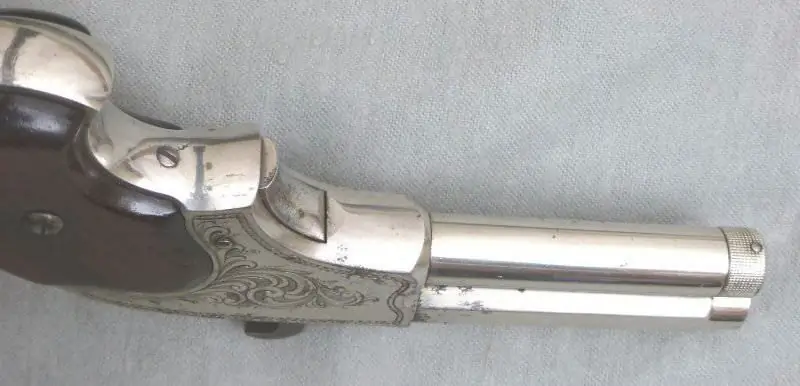
In the upper part, on the front side of the handle, there is a mainspring fastening screw.
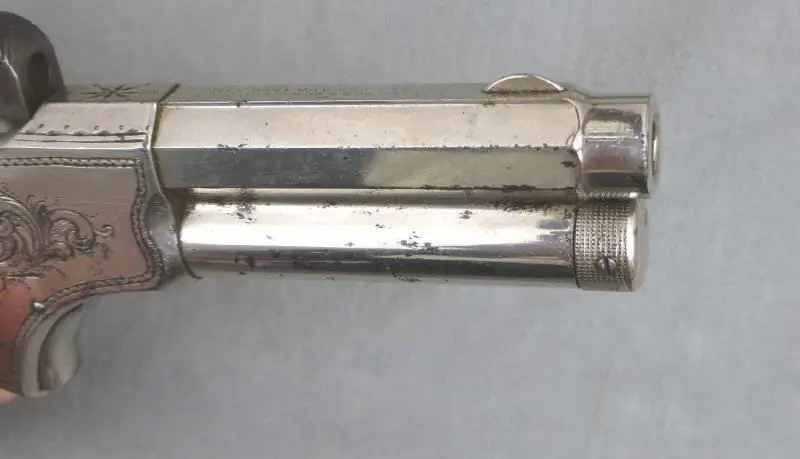
The sights of the Remington Ryder pistol consist of a semicircular front sight and a hole in the cocking (reloading) lever.
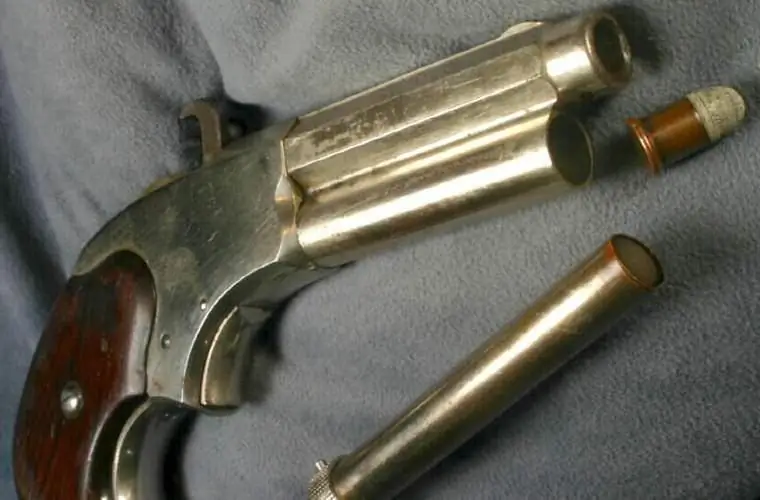
The pistol magazine is tubular under-barrel and can accommodate five.32 rimfire cartridges with a short metal sleeve (.32 Extra Short). To equip the store, it is necessary to remove the cylindrical insert, which serves as the cover of the store. Fixation of the magazine insert is carried out by a protrusion in the cover of the magazine, which goes into the recess under the barrel.
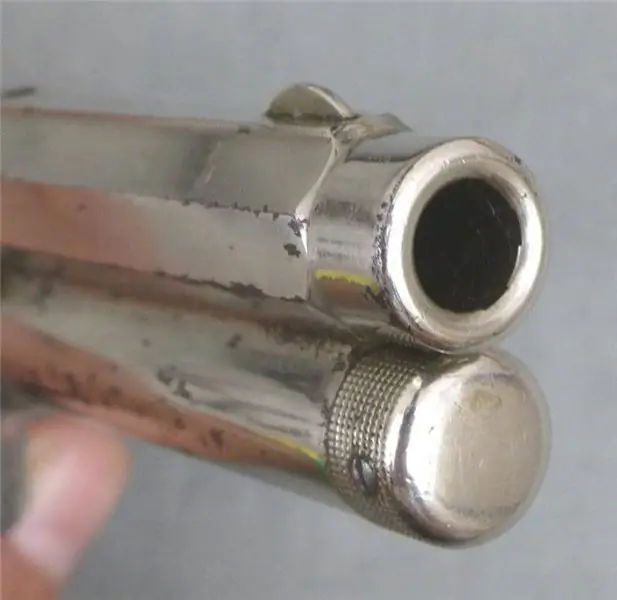
The barrel of the Remington Rider pistol has an octagonal cross-section. At the muzzle end of the barrel is cylindrical. The bore of the pistol has five grooves.
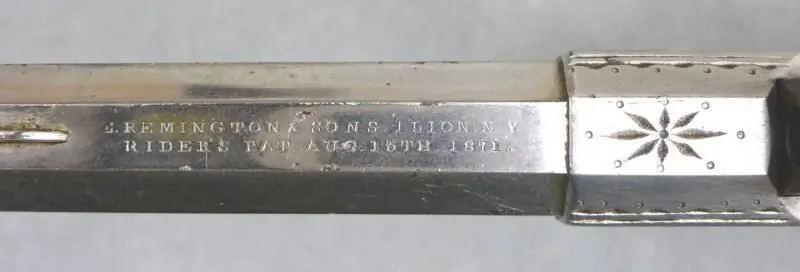
In the upper part of the barrel there is a two-line marking indicating the manufacturer's company, place of manufacture and the name of the patent “E. REMINGTON & SONS. ILION. N. Y / RIDERS PAT. AUG. 15TH. 1871. ".
Varieties of pistols Remington Rider (Remington Rider)
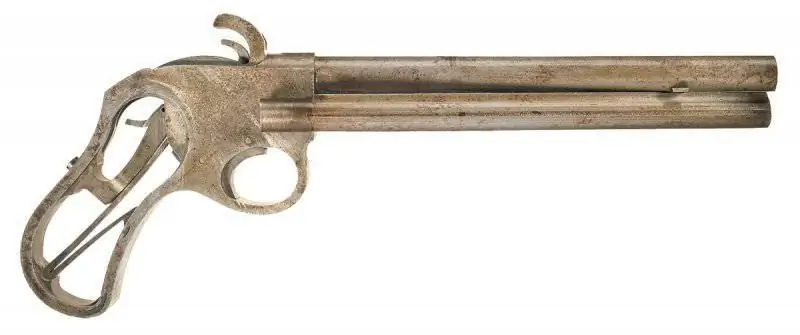
Speaking about the varieties of Remington Ryder pistols, first of all, it should be noted the prototype of the military model, which was developed for the.44 caliber cartridge. The pistol had a barrel length of 230 mm.
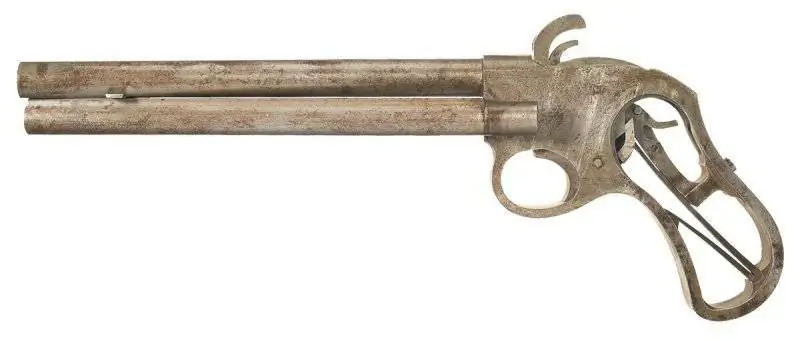
Patent numbered 141590 was issued to Joseph Ryder for this pistol on August 5, 1873. The use of a more powerful and massive cartridge required adjustments to the mechanism for feeding ammunition from the store and significantly complicated the weapon. The pistol was not accepted for service.
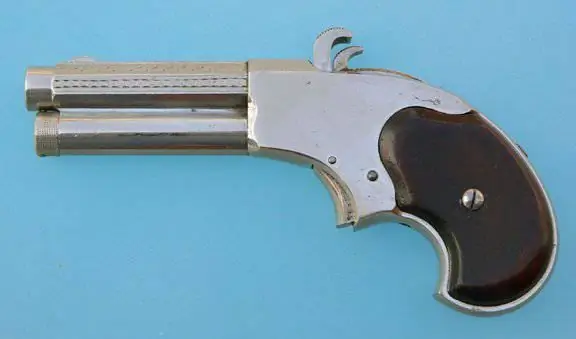
Other varieties of Remington Ryder pistols are due to the different finishes of the frame, barrel and grip cheeks.
The first finish: nickel-plated metal parts with an engraved barrel, wooden grip cheeks.

The next option has a silvered barrel and magazine. The frame is golden in color with flowing streaks, the cheeks of the handle are wooden. The hammer, trigger and cocking lever are blued.
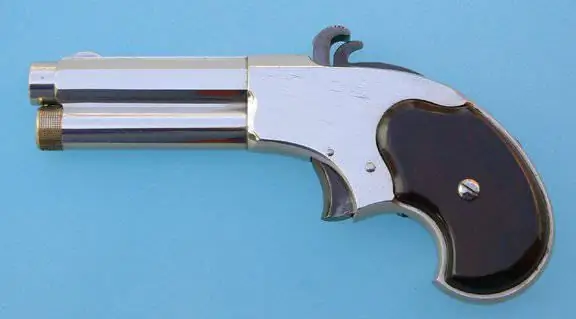
The Remington Ryder pistol of the simplest design has a nickel-plated barrel, magazine and frame. The trigger, cocking lever and hammer are blued, the grip cheeks are wooden. There is no engraving on the details of the weapon.
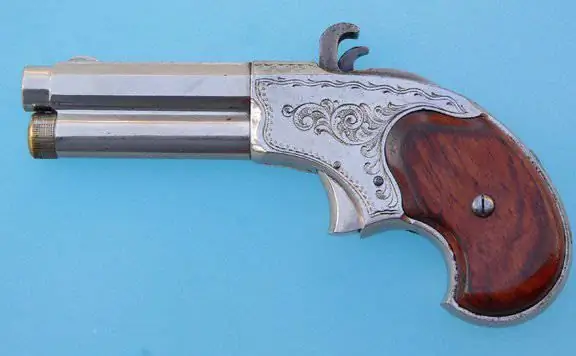
The engraving of floral ornaments on the body of the frame is quite common. In this version, the engraving is absent on the barrel and magazine. The trigger and cocking lever are blued, the trigger is nickel-plated.
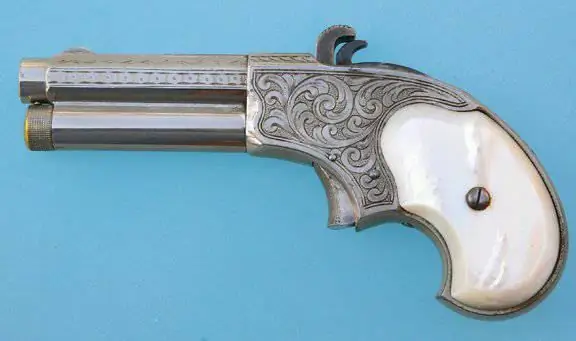
The more expensive Remington Ryder usually had more elaborate engravings on the frame and barrel, and the grip cheeks were sometimes made of mother-of-pearl.
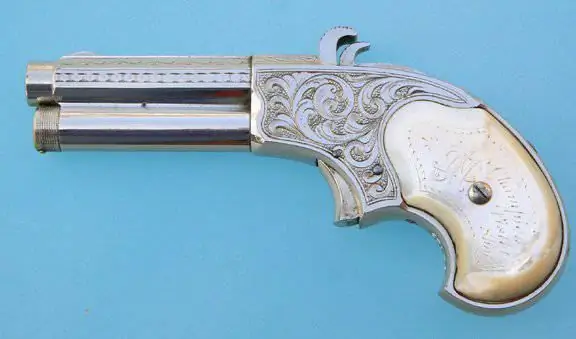
A rare finish in which all metal parts, including the trigger and cocking lever, are nickel plated. In addition, engraving and commemorative inscriptions are applied to the pistol grip cheeks.
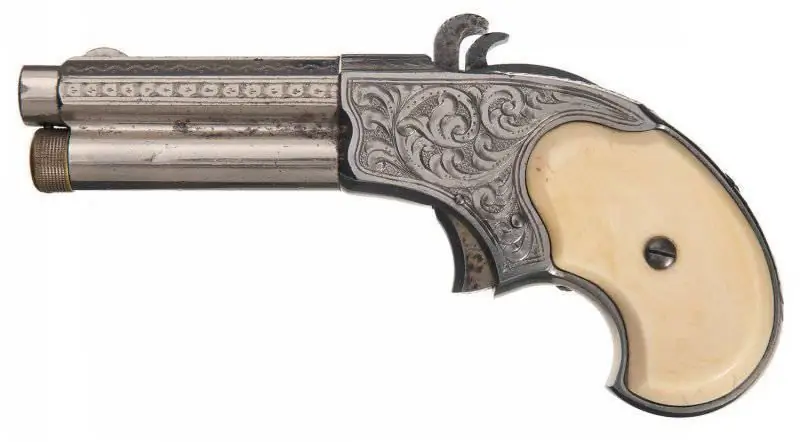
The variant of the pistol with rich engraving of the barrel and frame, as well as the cheeks of the ivory grip is a rather rare and valuable weapon.
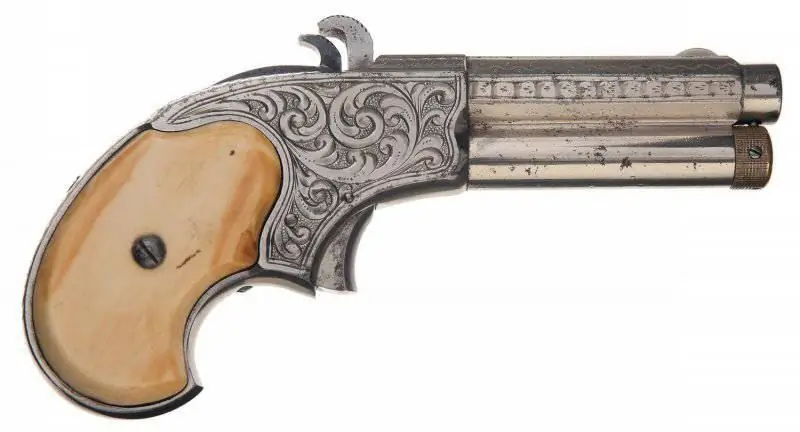
The Remington Rider magazine pistol was produced from 1871 to 1888. The approximate number of weapons produced today is estimated at just over 10,000. At antique auctions in the United States, a pistol can often be found in good condition. The price of a pistol depends on the finishing options and the safety of the weapon and ranges from 1.5 to 5 thousand dollars.






